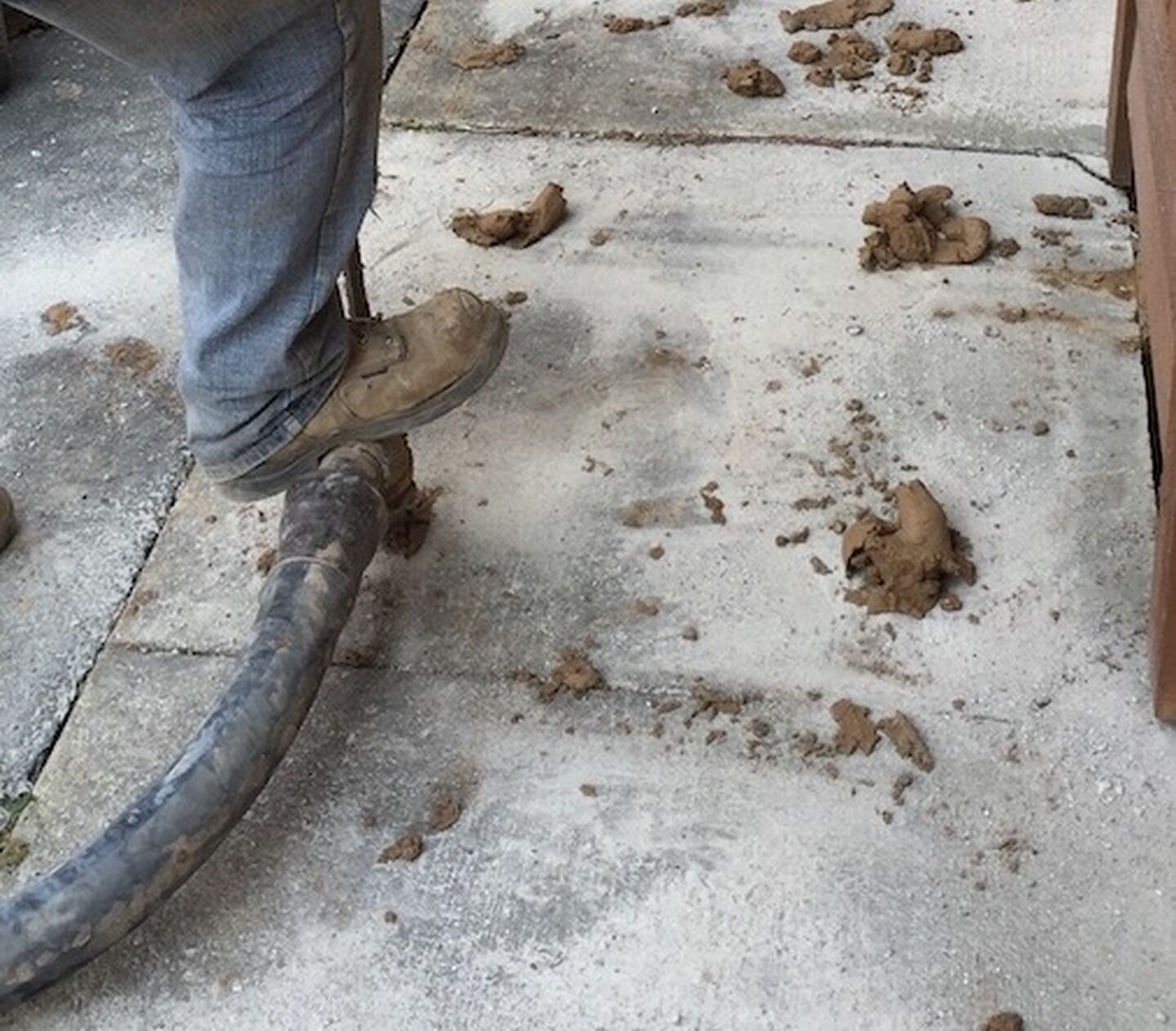3 Problems with Mudjacking Concrete Sidewalks

In previous articles we have discussed the three most common ways to repair sinking sidewalks in Chicago; concrete replacement, mudjacking and polyurethane concrete raising. While all three have their place in the home repair industry, mudjacking is the least expensive way to solve settling concrete sidewalks. As with most things in life, there is usually a downside of going with the cheapest solution.
The process of mudjacking settled concrete has been around for over 60 years, and as such, the issues with the process have been well documented.
Mudjacking has 3 Major Problems
- Size of Holes- Mudjacking requires 1 – 5/8”-2” diameter holes to be drilled into the surface of the concrete. The number and frequency of these holes depend on the condition of the existing concrete and the experience of the crew doing the mudjacking. These large holes will get patched after the process is completed and due to the new patch, they tend to stick out like a sore thumb. Remember, the whole reason for mudjacking the concrete sidewalk is to solve an unsightly out of level surface. These large holes solve one unsightly issue with another. Being unsightly is one thing, but these large holes, if placed too frequently and too close together, can cause the concrete sidewalk to crack as well, resulting in the concrete needing to be replaced anyway.
- Weight of Mudjacking Material- The cement slurry used for mudjacking is comprised of a sand or topsoil mix combined with a little portland cement as a binder. This material can be very heavy, as much as 100lbs per cubic foot. Typically sidewalks settle because of poorly compacted or prepped soil under the concrete slab, or subgrade. The additional weight of the mudjacking material is adding a lot of stress to already poorly prepped soil. This additional weight can cause further settlement so why use a process that potentially adds to the cause of the original problem?
- Longevity of Mudjacking Material- As stated above, the mudjacking material is made of a small amount of portland cement and a majority of sand or topsoil mix. This is the main reason as to why mudjacking is so inexpensive, sand and topsoil is low priced compared to new concrete or polyurethane foam. The issue is sand or topsoil mix is also very susceptible to deterioration by over saturation of the area and/or running water. If downspouts and sump pump discharges as well as negatively pitched grading are not resolved as part of the mudjacking repair, the water can cause the material to break down and erode, causing the settlement to occur again.
As you can see from the three points above, while mudjacking concrete sidewalks has been around a long time, there are some major issues with the process. If you don’t want to replace the concrete, you still have a great alternative to mudjacking in polyurethane concrete raising.
Polyurethane concrete raising solves all three of the problems cited above. The holes drilled in the concrete for polyurethane concrete raising are 5÷8” rather than 2” so they are much easier to conceal. The polyurethane foam is 2 – 4 pounds per cubic foot, a far cry from the 100 pounds per cubic foot you add to the subgrade with traditional mudjacking material. The polyurethane concrete raising material is similar to the material used to seal leaking foundation cracks, i.e. it is impervious to water and as such, will not erode like the sandy mudjacking material.
If you have a settled concrete sidewalk and want to repair it rather than replace it, please contact us. Here at U.S. Waterproofing, our advisors have years of experience helping homeowners repair their homes and the settled concrete around it.




